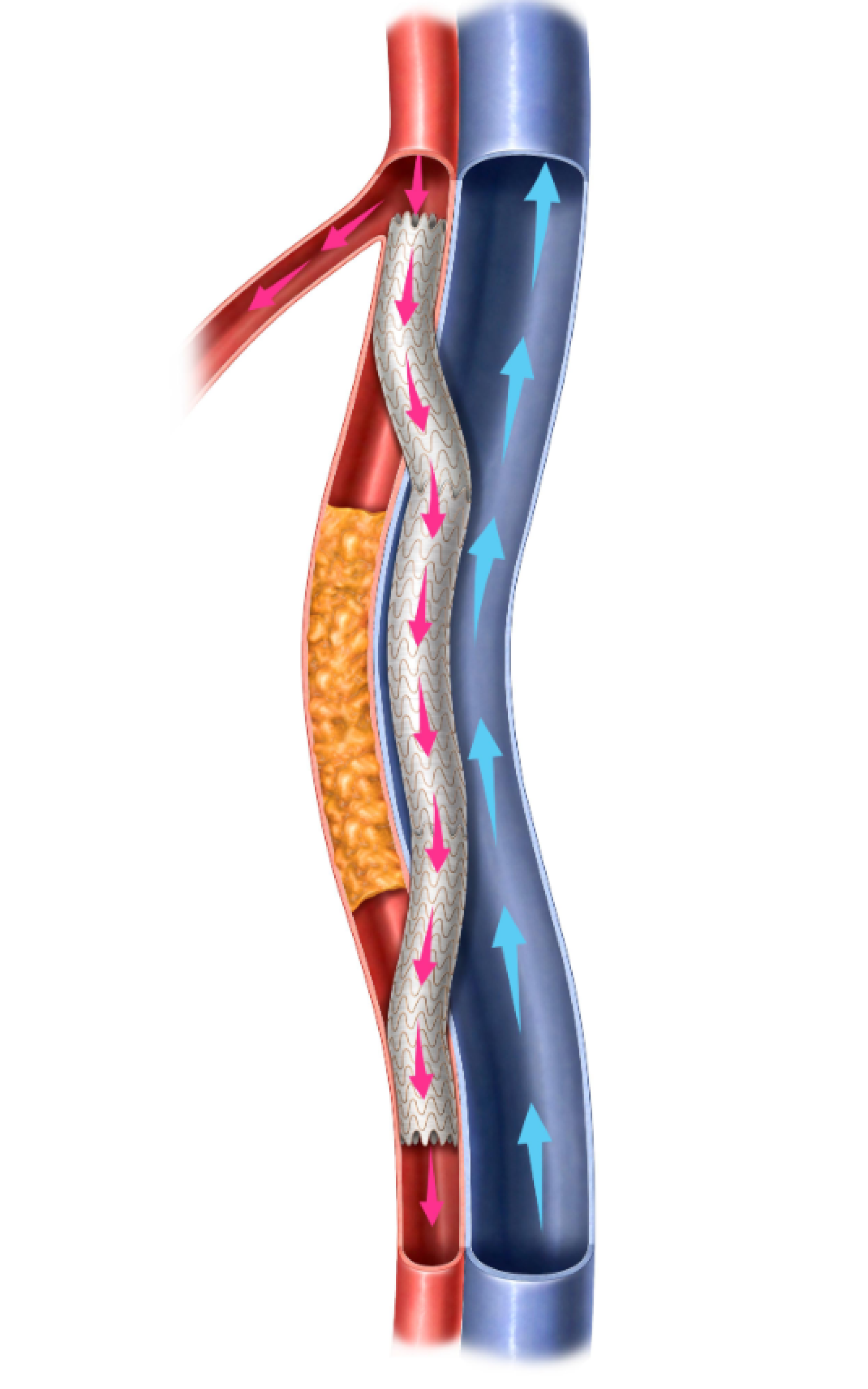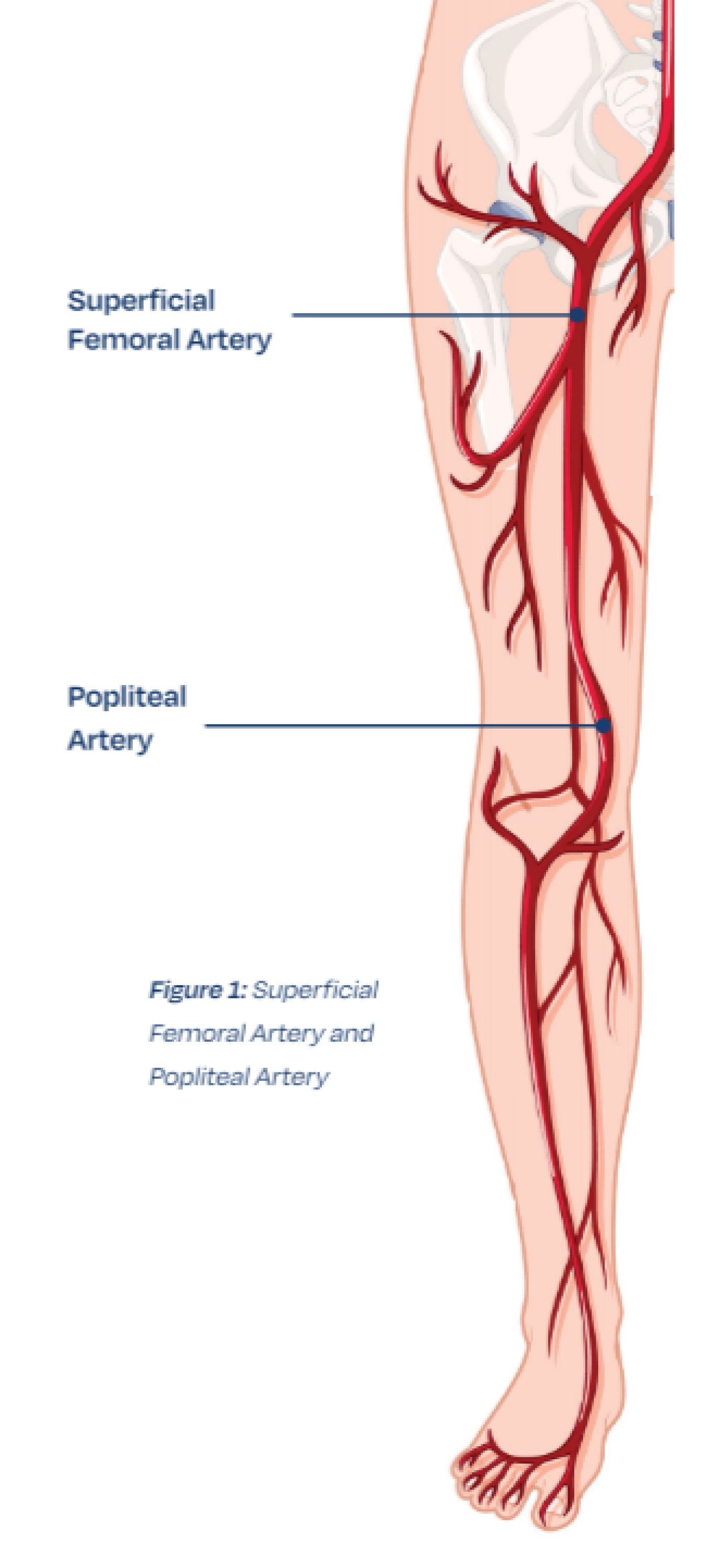Percutaneous Transmural Arterial Bypass (PTAB)
PTAB: A Minimally Invasive Option to Treat Peripheral Arterial Disease

We are thrilled to introduce PTAB with DETOUR System, a minimally invasive alternative to treatment of peripheral arterial disease in patients using innovative engineering. Our surgeons, here at BEVSA, are some of the few professionals trained in the Buffalo area to offer this pioneering technology. This is used to treat patients with long and complex peripheral arterial disease, specifically affecting the superficial femoral artery.
Who is Eligible For PTAB?
PAD is a circulatory problem caused by blockages in the arteries, which can lead to a reduction in the flow of oxygenated blood to your body, particularly in your lower limbs. The superficial femoral artery is the main vessel supplying blood to the lower leg. As plaque develops in the superficial femoral artery and blockages continue to increase, this can cause cramping in the legs, coolness of the legs, development of wounds which are slow to heal, absent pulse, and other symptoms.

The Percutaneous Transmural Artery Bypass (PTAB) is a minimally invasive approach that utilizes endovascular technique using your own vessels to create a bypass around the diseased area.
Patients with long blockages in the arteries of the leg, and/or a history of repeat endovascular procedures may be eligible for PTAB. For patients with extensive arterial disease, your vascular surgeon will assess your imaging studies and utilize these findings, as well as your history and comorbidities, to determine if you are a candidate for the procedure.
Procedure Details
Prior to the procedure your surgeon will determine an appropriate type of anesthesia or sedation.
To start treatment your surgeon will make two small punctures: one near the groin of the opposite leg being treated, and one between the knee and the ankle of the leg being treated. Angiogram technology will be utilized to insert small tubes through the punctures into your vessels, allowing the surgeon to guide the device system to the blockage. After a connection has been made between the artery and vein this will allow them to create the bypass. Your surgeon will essentially implant stent grafts that will pass through the arterial wall, into the adjacent vein, and then exit the vein back into the same artery. This bypass will redirect blood flow around the blockage to increase flow to the lower portion of the leg.

After your procedure you may experience some bruising, swelling, or pain, which is common after most endovascular procedures. Aftercare instructions will be discussed with you prior to discharge. You will begin with annual follow up after your procedure to ensure your bypass is functioning properly.
Patient Stories
Here at BEVSA, we pride ourselves on engaging with our patient’s stories and feedback. The following stories help highlight how our superior vascular care and compassion translates from our office to improving the everyday lives of our patients. We hope these stories provide comfort to our patients and their families and illustrate how our team at BEVSA goes above and beyond for our patients everyday.
Conditions Treatable with Percutaneous Transmural Arterial Bypass (PTAB)
Peripheral Arterial Disease (PAD)
- Leg Pain While Walking
- Non-Healing Wounds
- Plaque in the Arteries